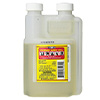Red Mites In Your Chicken Coop: Causes and Treatment
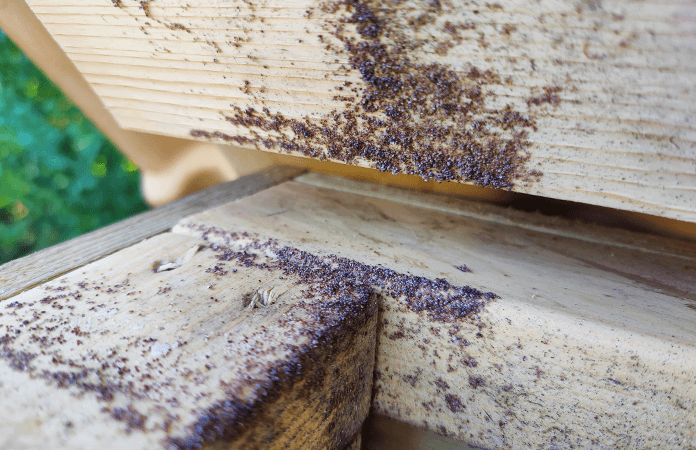
Chicken Fans is reader-supported. When you buy through our links, we may earn a commission. Learn more about our privacy policy and disclaimer.
One of the most upsetting issues when keeping chickens is dealing with a red mites infestation inside the chicken coop. Eradicating mites is difficult and time-consuming, but on the other hand, preventing red mites is quite an easy task!
A combination of methods is necessary to combat a red mite infestation in the chicken coop effectively. Each product and method has unique benefits, but following instructions is important.
We’ll start by addressing some commonly used prevention and treatment methods against red mites. All of these methods are safe to use near chickens, but it’s important to follow the instructions before use.
- DURVET PERMETHRIN: Remove bedding, feeders, waterers and chickens from the coop. Dilute at a rate of 1 part concentrate in 19 parts water (6.4 fl. oz. per gallon) and spray on coop surface, perches, cracks and crevices,… Let dry before chickens come back to the coop.
- DIATOMACEOUS EARTH: Preventative measure against parasites in the chicken coop. Sprinkle on top of the chicken coop bedding and in nooks and crannies.
What are Red Mites?
Red mite (dermanyssus gallinae) is an eight-legged blood-sucking ectoparasite found worldwide and a plague for wild birds and poultry. Red mites are found in privately owned backyard chicken coops and commercially-run poultry farms.
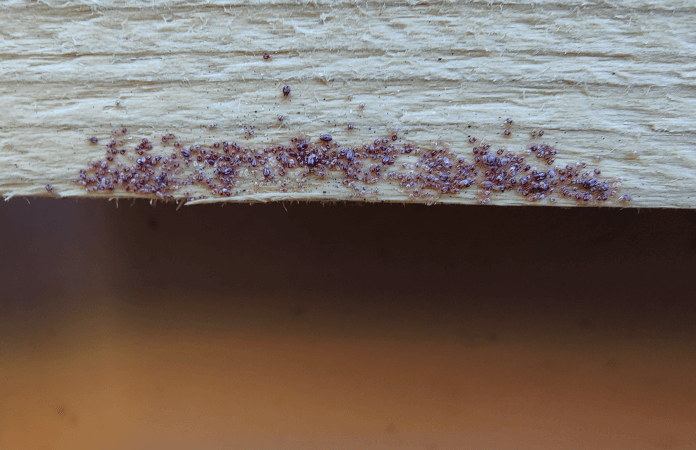
The parasite hides during the day and most of the night in the cracks and crevices of the chicken coop or the litter. They come out at night to feed, but it only takes 30 to 60 minutes. So it can be challenging to spot them, as they are seldom seen on the bird.
Red mites multiply at a spectacular rate. It takes around seven days for an egg to turn into larvae into an adult red mite that lays another batch of eggs. A small number of red mites inside the coop can rapidly turn into an infestation.
Why is Red Mite Infestation Dangerous?
By feeding on the blood of poultry, red mites can endanger your flock and yourself as a chicken keeper. Even a low red mite population can bother your hens, and they’ll refuse to sleep inside the coop or use their roosting perches.
Effects of Red Mites on Chickens
Red mites are a severe issue inside a chicken coop and can cause significant health problems.
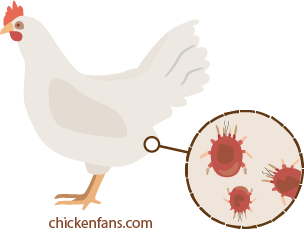
A red mite pest causes stress, feather pecking, feather loss, aggressive behavior, egg-downgrading, reduction in egg quality, anemia, and in rare cases, death caused by blood loss. According to research, a red mite infestation can even transmit certain bacterial or viral diseases like fowl cholera or salmonellosis.
Because of the constant blood loss, your chickens experience sleep deprivation, impacting their quality of life. Chronic fatigue affects their immune system, making them prone to infections and respiratory diseases. Due to lack of sleep, these infections take longer to resolve, making them even weaker.
Frail hens are less likely to lay quality eggs, meaning a reduction in egg production. On top of that, mites also cause staining of the eggshell surface.
Red mite bites cause skin irritation on your chickens, making them peck their feathers. A parasite infestation like red mites often causes feather pecking, and stress worsens the problem. In severe cases, feather pecking can result in cannibalism in your chicken flock.
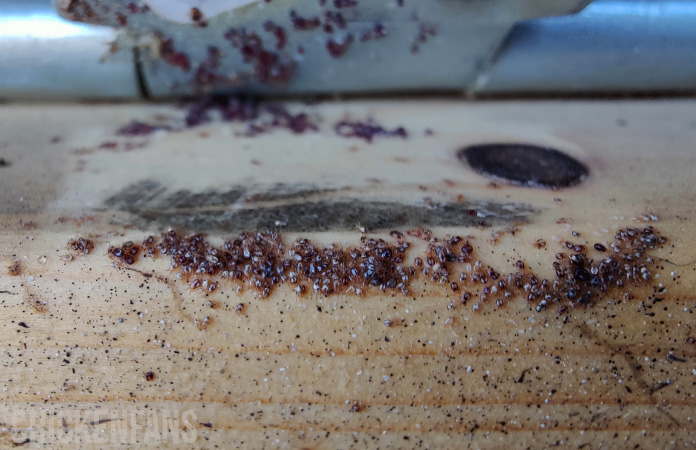
Effects of Red Mites on Humans
Overall, contact with red mites results in slight skin irritation and rash and therefore seems entirely innocent for humans. However, the symptoms of ‘Gamasoidosis‘ also include scarring, pinpricks, hyperpigmentation, and secondary infections.
Red mites can enter the ear canal and other body cavities such as nostrils, eyelids, and genitourinary openings.
Preventing a Red Mite Infestation
For various reasons, getting rid of red mites inside the chicken coop is challenging. That’s why prevention is better than cure.
Prevention starts around and inside your chicken coop. Let’s guide you through all you need to know.
- The chicken coop
- Dust baths
- Cleaning the coop
- Garlic and garlic powder as a miracle worker
- Periodically check hens and coop
Let’s see what a red mite infestation looks like:
The Chicken Coop
Your chicken coop should be placed at least 6 feet away from all vegetation in your backyard, like trees and bushes. Keep its layout as simple as possible, with no nooks and crannies where the mites can hide. Paint the inside of your coop in a light color; it makes it easier to spot red mites.
Whether you choose wood or plastic as chicken coop material doesn’t matter. Red mites can be found in eighter plastic, wood, or PVC chicken coops, but plastic or PVC is easier to clean.
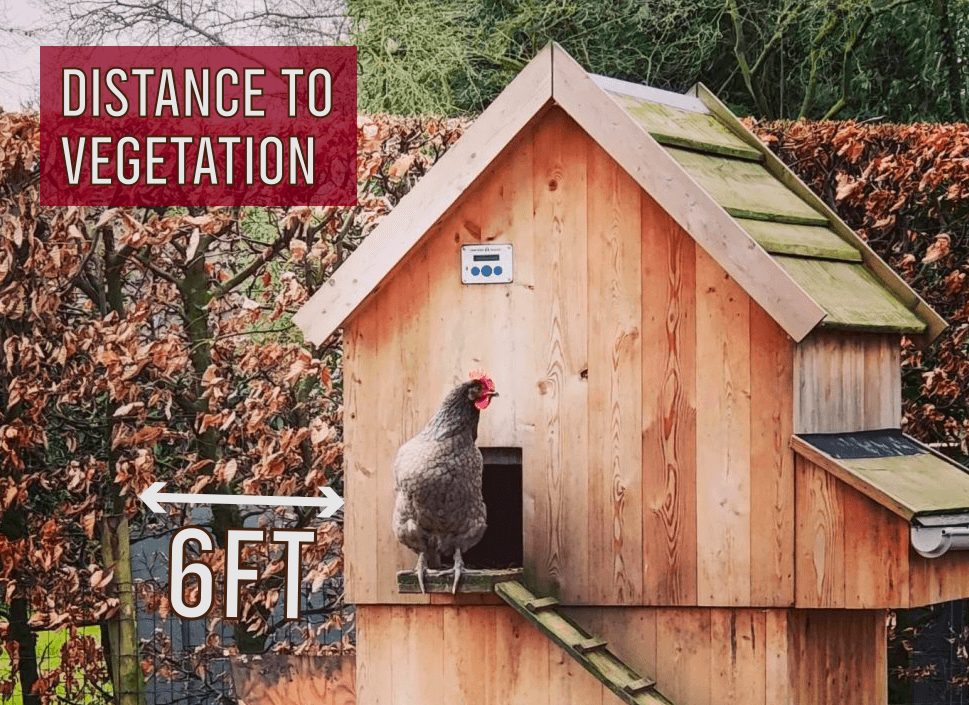
As said before, red mites hide in cracks and crevices in and around the chicken coop. Fewer hiding places will discourage the mites from settling in your chicken coop.
Dust Baths
Chickens love dust baths. They clean themselves by getting dirty and clean chickens are less likely to catch parasites or suffer from any other major health issues. Provide enough dust baths inside your chicken run. You can easily create a dust bath by digging a hole and filling it with construction sand or garden sand.
Cleaning the Coop
Clean the coop regularly. Remove moist and dirty bedding. Use a broom to brush out the coop and a dustpan and brush to clean the nooks and crannies. Hose down the entire coop, and disinfect the coop only using natural cleaning products that won’t irritate your chickens. Rince once more and leave to dry in the open air.
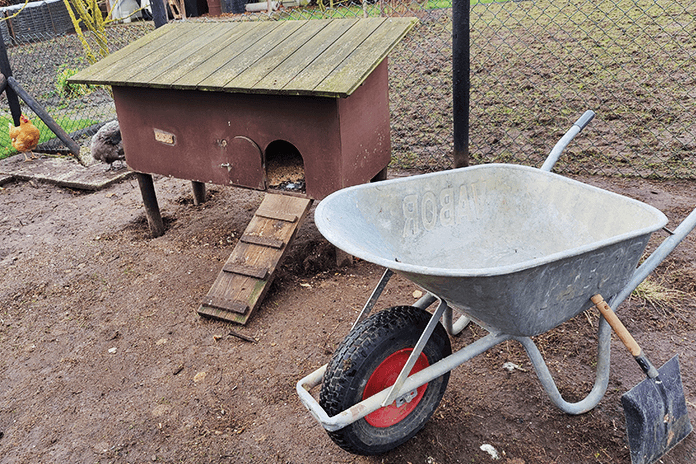
Regularly clean your brushes, broom, and other materials used inside the coop (like shovels or pitchforks).
Diatomaceous Earth
Some chicken owners sprinkle food-grade DE (diatomaceous earth) on the chicken coop bedding or dust their chickens with the powder. Several types of research show that dusting your hens with DE or sprinkling food-grade DE on the bedding can be an effective treatment to help control parasites like red mites.
However, DE is very dusty and can be dangerous for your chickens’ respiratory system. Whether or not you want to use DE is up to you, but if you don’t feel comfortable using DE, you can use garlic powder or tobacco stalks instead.

Garlic and Garlic Powder
Garlic or garlic powder is not harmful or toxic to chickens and can be used as a biopesticide.
Garlic has multiple health benefits and makes your chicken coop smell like a Mediterrane restaurant. Red mites don’t like the smell of garlic, so it works as a natural repellant.
There are some fascinating uses of garlic inside the coop to prevent a red mite infestation:
Adding garlic powder to the chicken coop bedding
Sprinkle garlic powder on top of the chicken coop bedding or spray garlic water on the coop to prevent a red mites infestation, as they hate the smell of garlic. However, store-bought garlic powder can be quite expensive in the long run.
Spraying the coop with garlic water prevents red mites from entering the coop. You can make your own garlic mite repellant spray by simply adding garlic juice to some water. Spray the mixture on the chicken coop every other day.
Feed your chickens garlic
When feeding your chickens fresh garlic or garlic leaves, the taste of their blood is barely interesting for red mites. It boosts their immune system and keeps your chickens healthier and free from diseases.
You can add a garlic cloth to their waterer, but remember to frequently replace the water (and garlic). Once chickens get used to the taste of garlic, you can feed them minced fresh garlic. Until then, you can add dried garlic to their food.
A controversial issue when feeding your chickens garlic is whether this will affect the taste of their eggs. Opinions vary on this topic. According to taste test research done by Clemson University, people preferred the eggs produced by the garlic-eating hens as their taste was milder. Researchers believe the intake of garlic might reduce the sulfur content of the eggs.
Tobacco Stalks
Next to using garlic powder, some chicken owners use tobacco stalks inside the coop, on top of the bedding as a natural repellent to keep mites away. These tobacco stalks have a very strong odor but are unharmful for humans and chickens. The odor makes your chicken coop less interesting for red mites.
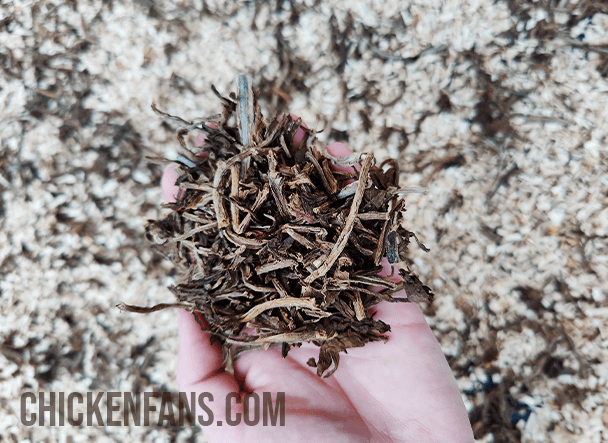
Periodically check hens and coop
Regularly check your chickens for red mites or red mite bites. The parasites themselves are hard to spot on your chickens because they’re rarely seen on the bird. But when sucking blood, red mites leave bite marks that the naked eye can see.
Keep a close eye on your chickens when you notice any of the following symptoms:
- Itchiness
- Pecking their own feathers
- Dirty vent feathers
- Weight loss
- Loss of appetite
Inspect your chicken coop periodically for the presence of red mites. It can be challenging to spot red mites, but not impossible. Wipe your hand under roosting perches and in the nooks and crannies of the chicken coop. You could have a mite problem when there’s blood on your hand.
Don’t let the problem become an infestation and immediately deal with the mite issue.
How to Treat a Red Mite Infestation
Once you’ve spotted red mites on your chickens or inside your chicken coop, you’ll have to deal with the problem immediately. Don’t let it get out of hand.
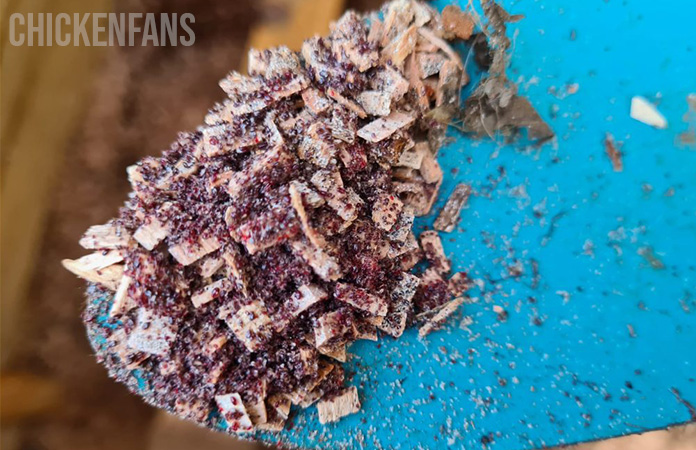
Poultry red mites are most active in the summer months, between May and October. Red mites become asleep and don’t reproduce during winter when temperatures drop below 50 Fahrenheit. So getting rid of red mites is significantly more difficult during warm months.
Let’s talk about solving the problem!
- Cleaning out the coop
- Disinfect and/or burn the mites
- Stay away from chemicals
Cleaning out the Coop
A thorough cleaning of the coop is necessary after discovering red mites. Remove all chickens, bedding, waterers, feeders, and roosting bars. Hose down the coop with water.
Disinfect and/or Burn the Mites
When managing a severe infestation, cleaning the coop is not enough. It’s best to eradicate the red mites as much as possible. When owning a wooden chicken coop, use a blow torch to burn the mite clusters in the nooks of the coop. Don’t set your coop on fire; heat all hiding places, as mites can’t survive temperatures above 130°F.
Heating the nooks and crannies of the coop with a blow torch is impossible on plastic coops like the Omlet Eglu Cube, so use a steam cleaner instead. Be careful to heat the steam cleaner above 130°F.
After cleaning out the coop and heating all nooks and cracks, you must disinfect. You can use any disinfectant in the cupboards, but be aware not to use products that irritate your chickens. Find out how to DIY an easy and chicken-friendly disinfectant here.
Several treatment methods are available for purchase.
- DURVET PERMETHRIN: Remove bedding, feeders, waterers and chickens from the coop. Dilute at a rate of 1 part concentrate in 19 parts water (6.4 fl. oz. per gallon) and spray on coop surface, perches, cracks and crevices,… Let dry before chickens come back to the coop.
- DIATOMACEOUS EARTH: Preventative measure against parasites in the chicken coop. Sprinkle on top of the chicken coop bedding and in nooks and crannies.
Stay Away from Chemicals
There are all kinds of products or insecticides on the market, very effective in eradicating mites or other parasites, but they are not safe for chickens. Please don’t use any of these chemicals near animals, as they can cause serious health problems.
With the tips and tricks we gave you, you will likely succeed in keeping your chicken coop mite-free using only natural treatments.
